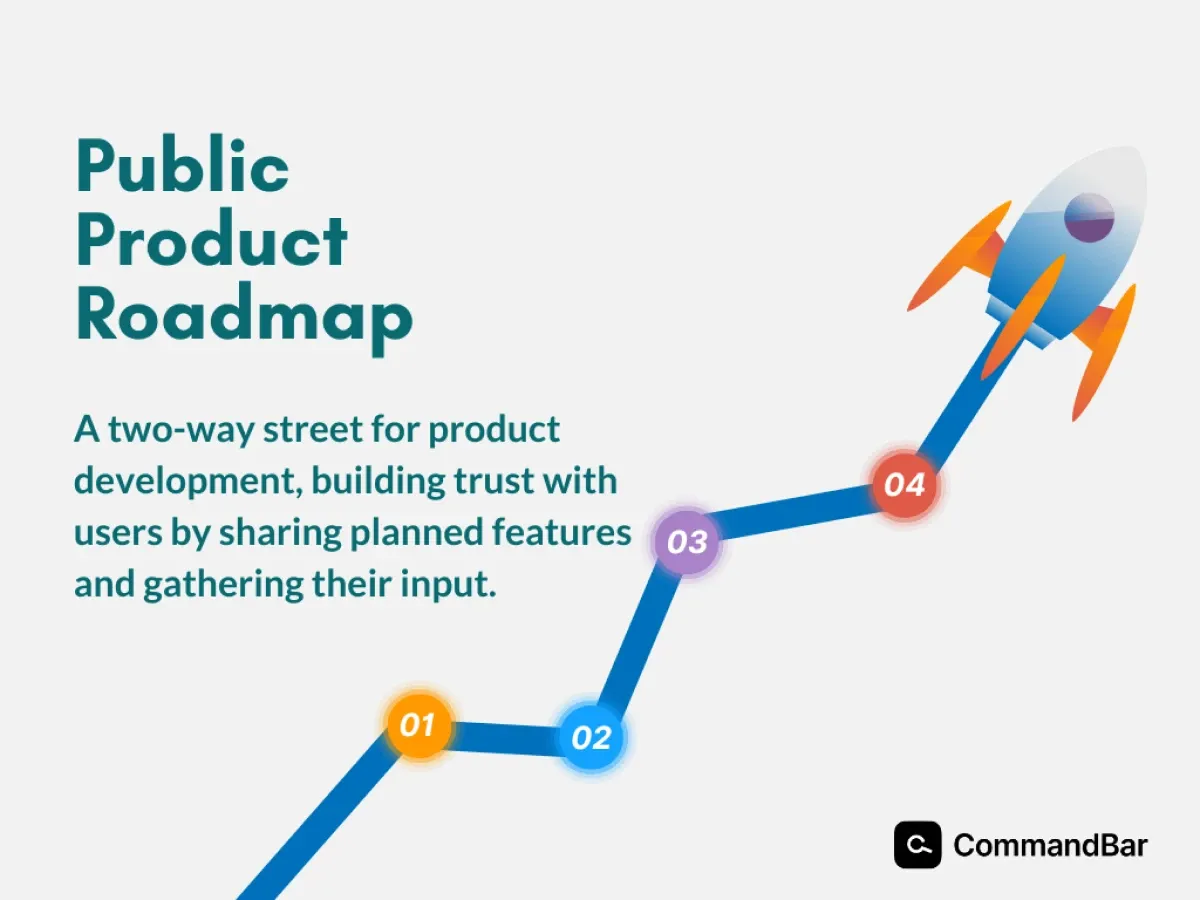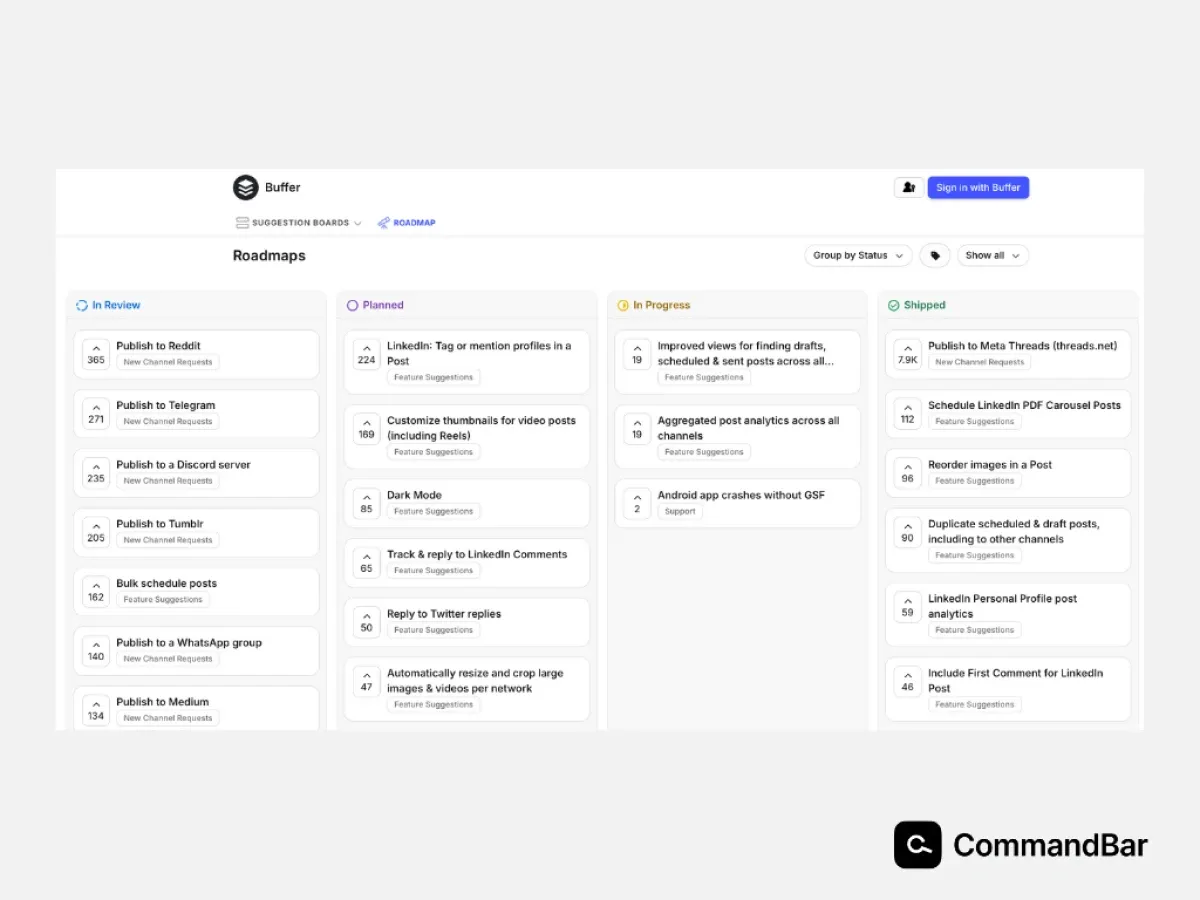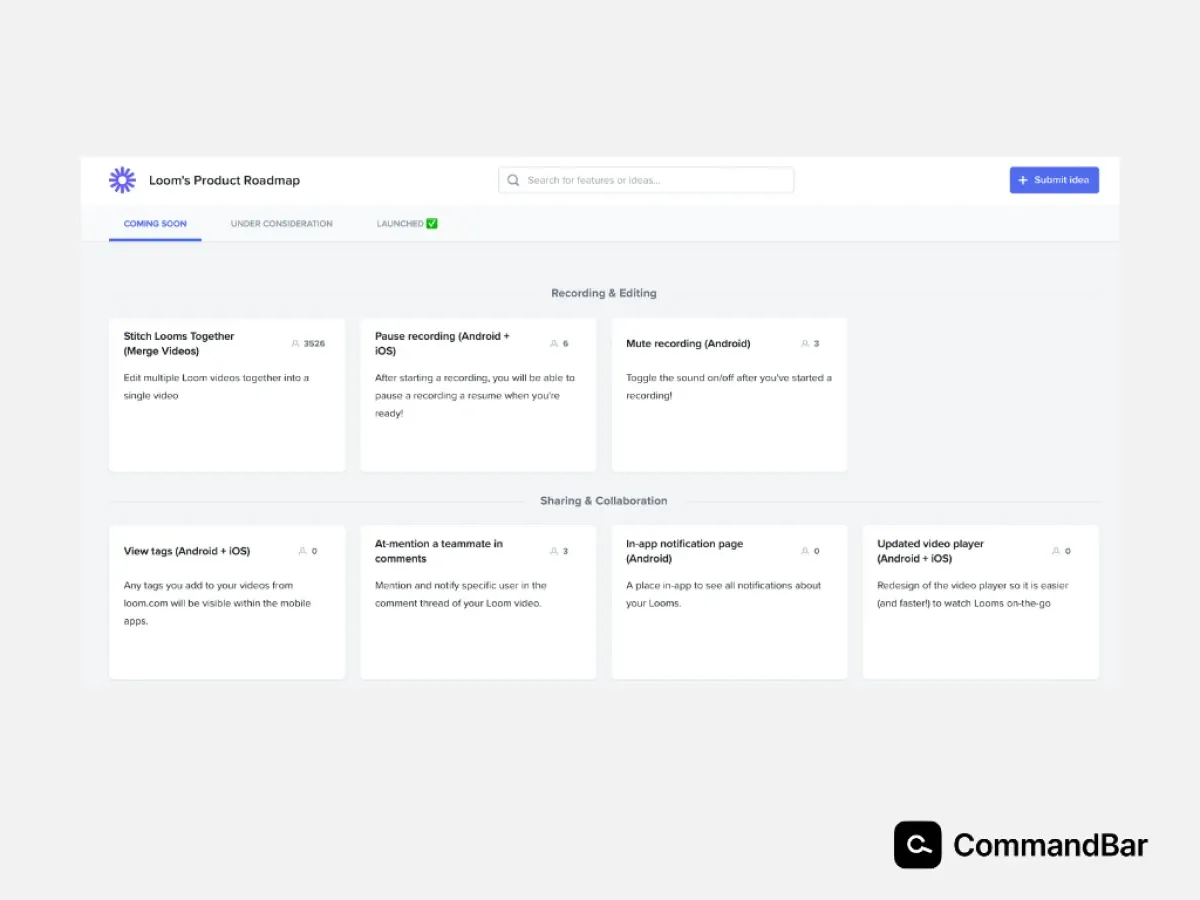How would you feel, as a B2B buyer, to get a transparent view of your favorite platform or app’s development journey? To be able to see the intricate mechanics of what is going on under the hood? To have a voice in laying out the features and functionalities for the future version of the product? That’s exactly what a public product roadmap offers. It is an open window that invites the public to look at the development process.
Why exactly do businesses opt for this level of openness, and shall we say, vulnerability?
First, it gives users a say in what they would like to see in the product. When product managers showcase planned features, it demonstrates their commitment to user feedback. Users feel valued and have a sense of agency in shaping the product’s evolution.
Second, public roadmaps often translate to faster development. With user expectations in clear view, product management and development teams can prioritize features and iterate quickly based on user feedback. This serves as a “beta test” and gives users a sense of continuous improvement.
Building user trust with a public product roadmap

A public product roadmap might sound as if it contains a mere list of upcoming features, but that is not it. It’s actually a strategic tool that is used for building trust among users, to show them that you value their inputs, and to create a sense of community around your product. Buffer’s public product roadmap is a great example of this.

Here’s how you can use your product’s roadmap to your advantage.
A public product roadmap shows you care
If you are genuinely committed to user feedback, and not just saying it because it makes your mission statement look pretty, a public product roadmap can demonstrate your commitment. It shows planned features that spring up from user suggestions. It sends out a clear message to users, and the public in general – “We hear you and your ideas matter to us”.
This is about respect for user input – it’s a validation of their voice and a clear sign that the company isn’t just building products for the heck of it, but genuinely tuning them to the real problems and needs of the end-user. It’s a smart way to get users to feel invested in the success of your product.
You can ship your product faster
A public product roadmap lays bare user expectations, which means that product and development teams can prioritize features and iterate on them quickly. This translates into a more dynamic development process where features are not set in stone and there is enough “space” to adjust plans based on incoming user feedback.
For instance, early feedback on planned features might reveal new user challenges. A public product roadmap can be transparent about this and allow the development team to pivot to a more user-centric solution, leading to higher user satisfaction. Imagine a user has a frustrating experience and suggests a solution – and your product team actually works on that solution. What a great way to keep users engaged in the product’s evolution and win some brownie points from the customer!
Walking the tightrope with a public roadmap
A public product roadmap requires careful management. Get this wrong, and like a tightrope walker, you might find yourself losing your balance.
Here are some potential pitfalls you may encounter when working with a public roadmap.
Broken promises make for ugly songs
While being transparent about your product roadmap builds trust, it can also erode it pretty quickly if you fail to deliver on the promised features. Imagine a user eagerly awaiting a highly requested feature only to find out that its release date has been pushed back or canceled. This is frustrating, to say the least, and damages the very trust the roadmap was meant to build.
To avoid this, manage expectations from the outset. Public roadmaps should be clear about feature priorities and timelines, with realistic estimates and disclaimers about potential delays or changes. Openly communicating any roadblocks is important. A simple update explaining the reason for a delay can go a long way in maintaining user confidence.
Balancing the voice of the few vs. the silence of the majority
Another risk with a public roadmap is letting the loudest voices drown out the needs of the silent majority. Public forums and social media make for great user feedback collection channels. However, it's important to maintain sight of the less vocal majority who might have different needs or priorities.
Here's where you can make use of in-product surveys and chatbots like Command AI’s CoPilot to gather feedback from a wider range of users in an unobtrusive manner. Similarly, analyzing areas where users get stuck within the app or platform can provide valuable insights into user pain points that might not be explicitly voiced.
Creating a successful public product roadmap
A public product roadmap can be a great tool for user engagement – it creates a sense of community and drives product success as features are pre-vetted by the end-users. One such example is Clickup’s public product roadmap which sets out a detailed list of planned and under-development features, feedback requests, and changelog.

Here’s how you can craft a product roadmap that keeps users informed, involved, and excited.
Set clear expectations
Transparency is key, but so is setting realistic expectations about what can be delivered in a certain timeframe. Prioritization should be based on a combination of user needs, business goals, and development feasibility. Timelines should be realistic and avoid overly optimistic estimates.
Transparency needs to extend beyond initial planning. Be upfront about potential changes or delays. Openly communicate the reasons behind these adjustments, whether it's technical challenges, user feedback leading to a better solution, or a shift in business priorities. A simple explanation can go a long way in maintaining user understanding and trust – fail to do this and you risk alienating your users.
Actively listen to users – the vocals and the silent ones
The public roadmap is a conversation starter, but it is not the only channel for user feedback. To capture the needs of the silent majority, explore additional avenues:
- In-app feedback: Strategically place surveys within your product to gather feedback from a wider user base. Keep such surveys short and unobtrusive to avoid disrupting the user experience.
- User interviews: Conduct in-depth interviews with a representative sample of users to gather insights into their needs, motivations, and pain points.
- User research: Analyze user behavior patterns to understand how users use your product to reveal hidden trends and areas for improvement. Look for patterns in user drop-off points or areas where users get stuck – these can be clues to unvoiced frustrations.
Celebrate the wins
Keep users engaged by regularly communicating progress on roadmap features. Share updates on development milestones, feature previews, and upcoming releases. Such kind of transparency and communication fosters excitement and builds a sense of anticipation. It's a validation of the users’ voice and a sign that their input matters.

Loom’s public product roadmap clearly communicates which features are coming out soon, which ones are under consideration for development, and which ones have been launched!
A public product roadmap is a strategic tool for user engagement and product success
A public product roadmap, when used effectively, is a powerful tool for building strong user relationships. It gives users a transparent window into the product's development journey, showcasing planned features and demonstrating a commitment to user feedback. This builds trust and empowers users as they feel like valued partners in the product's evolution.
However, a public roadmap is prone to vulnerabilities and requires careful management. Setting clear expectations, communicating potential delays openly, and capturing feedback beyond the vocal few are crucial for maintaining user trust. By using a combination of in-product surveys, user research, and active listening, you can gain a holistic understanding of user needs and ensure the roadmap reflects the priorities of everyone – those who talk and those who don’t.
Ultimately, a successful public roadmap is a two-way street. It's about showcasing development agility and shipping features that address user needs. It's also about celebrating wins and reinforcing the value of user input. By embracing transparency and open communication, you can leverage the power of a public roadmap to build a loyal user base and ensure your product is something your users love!

















